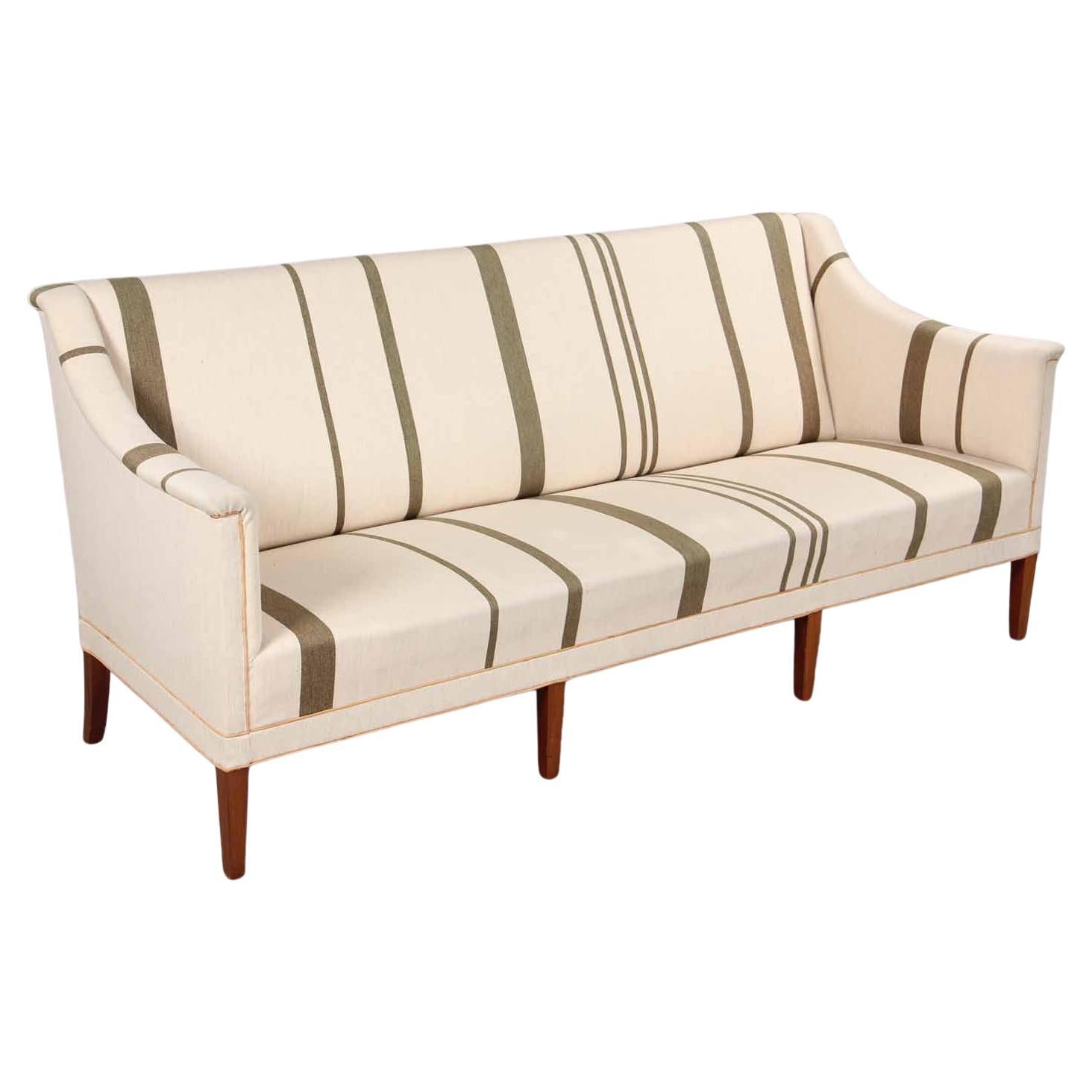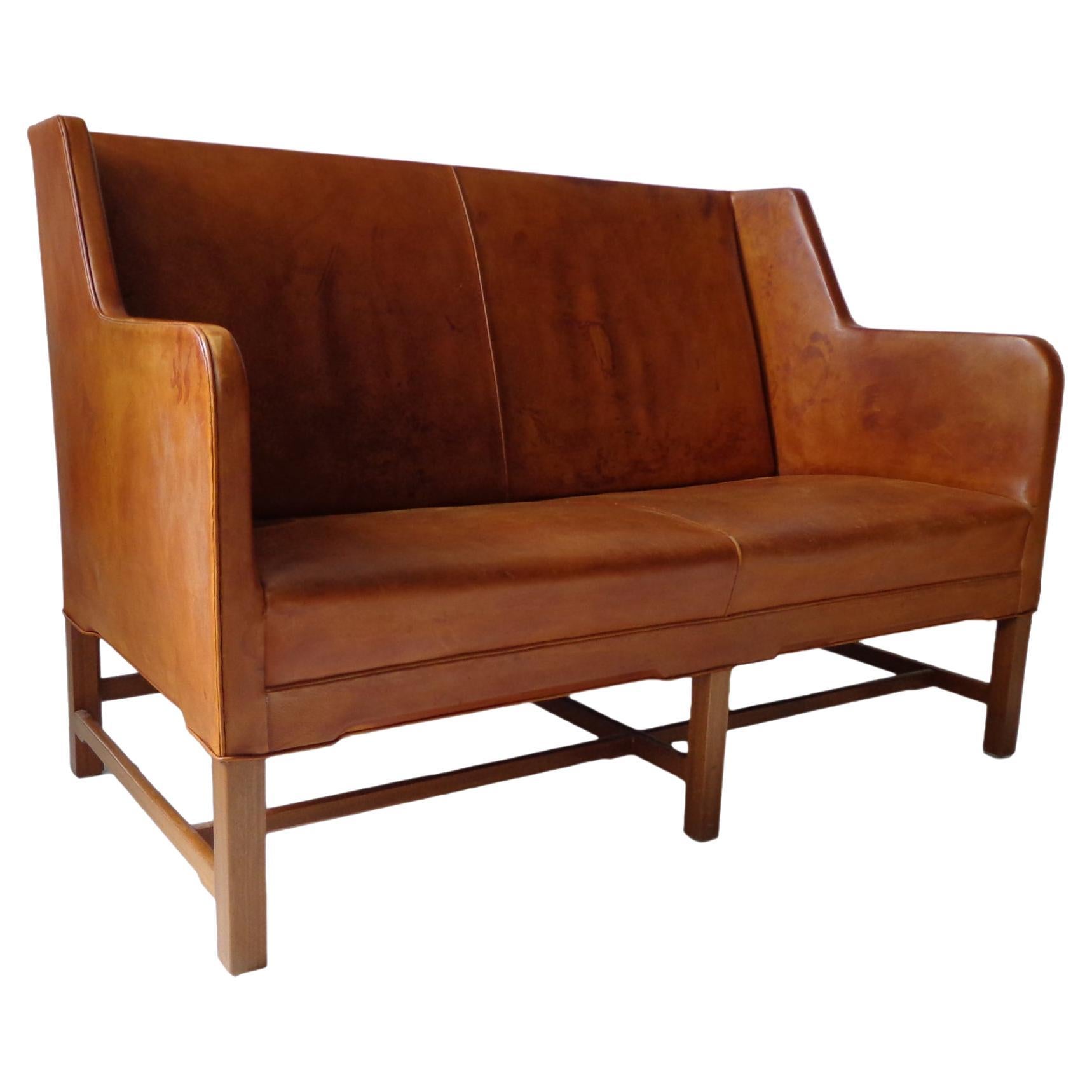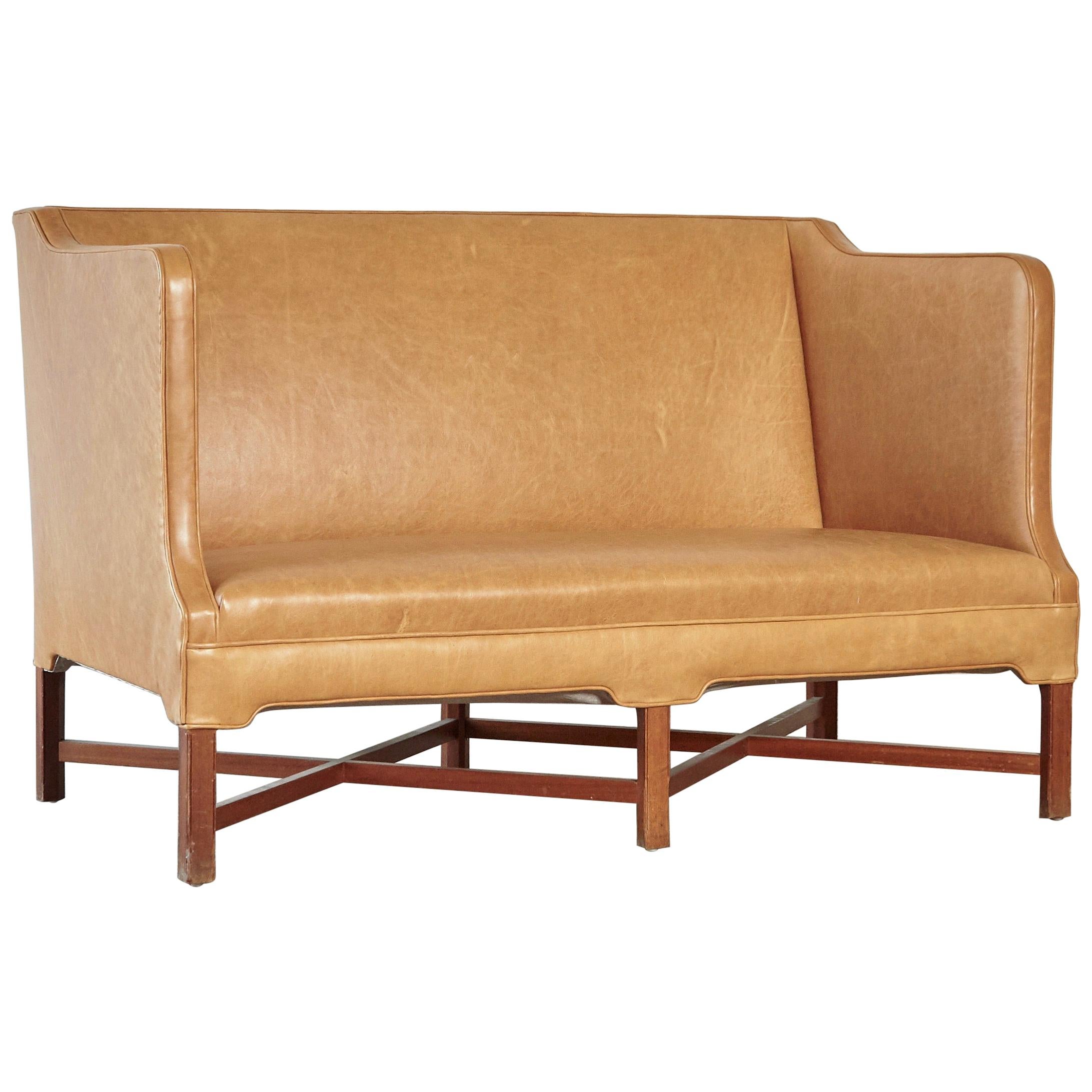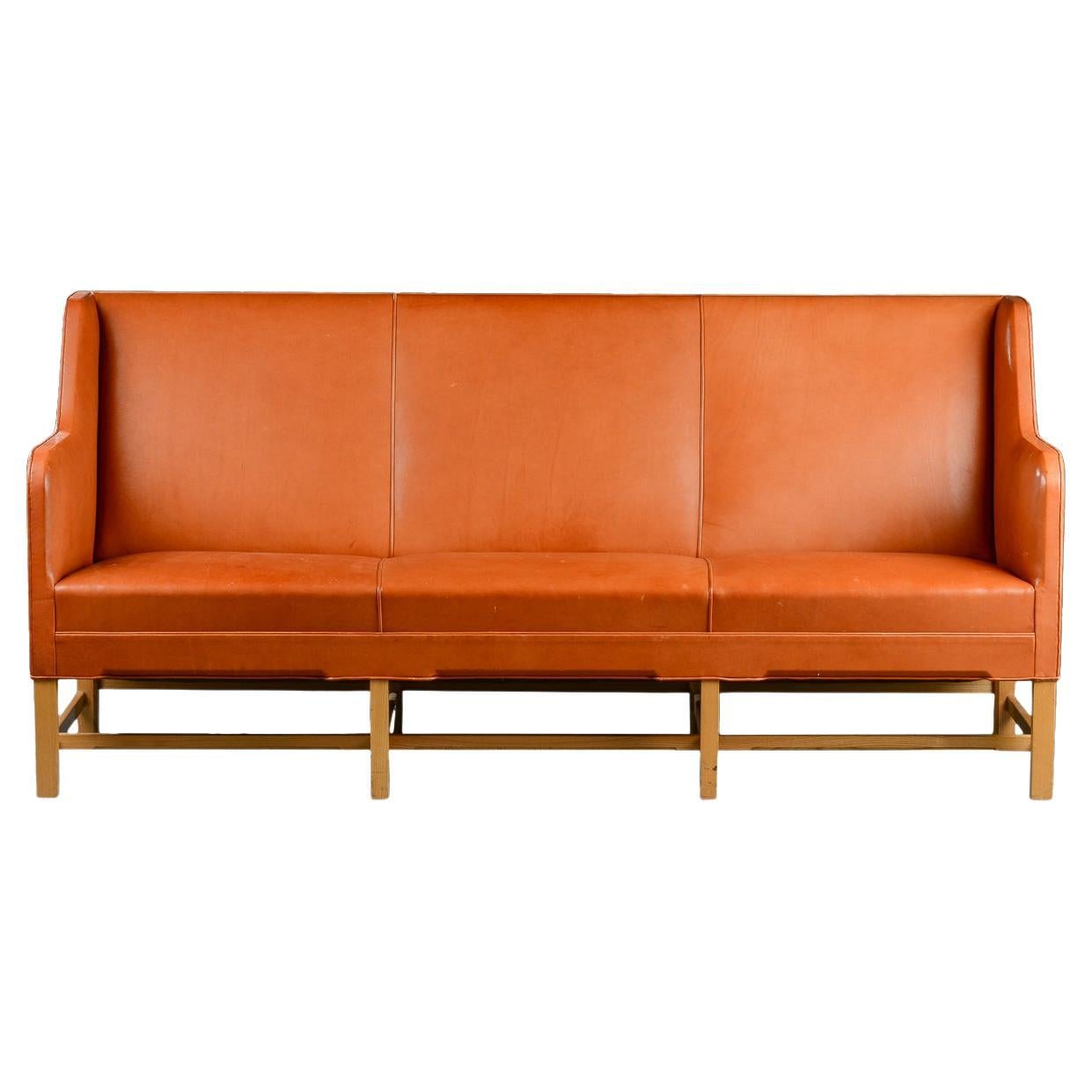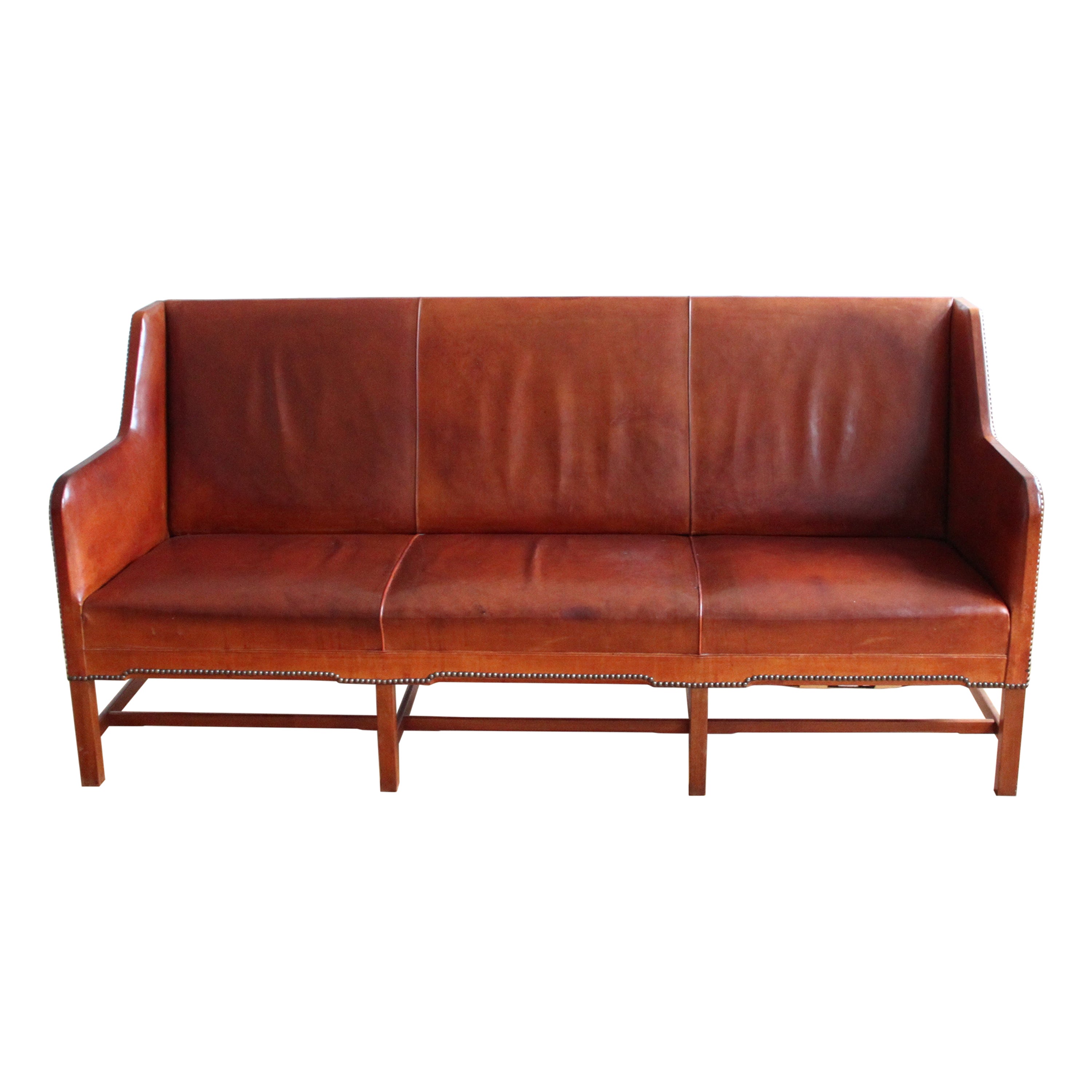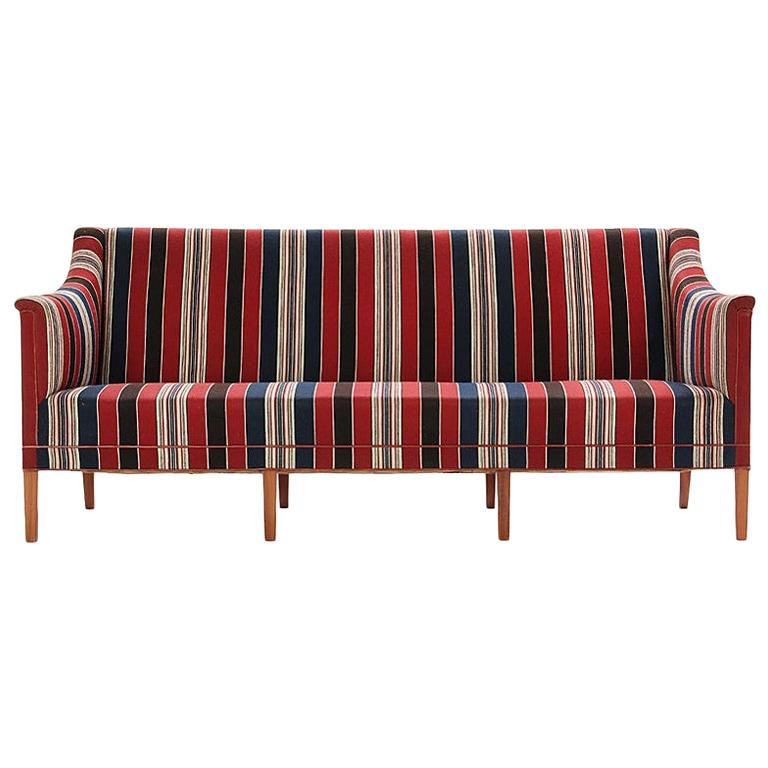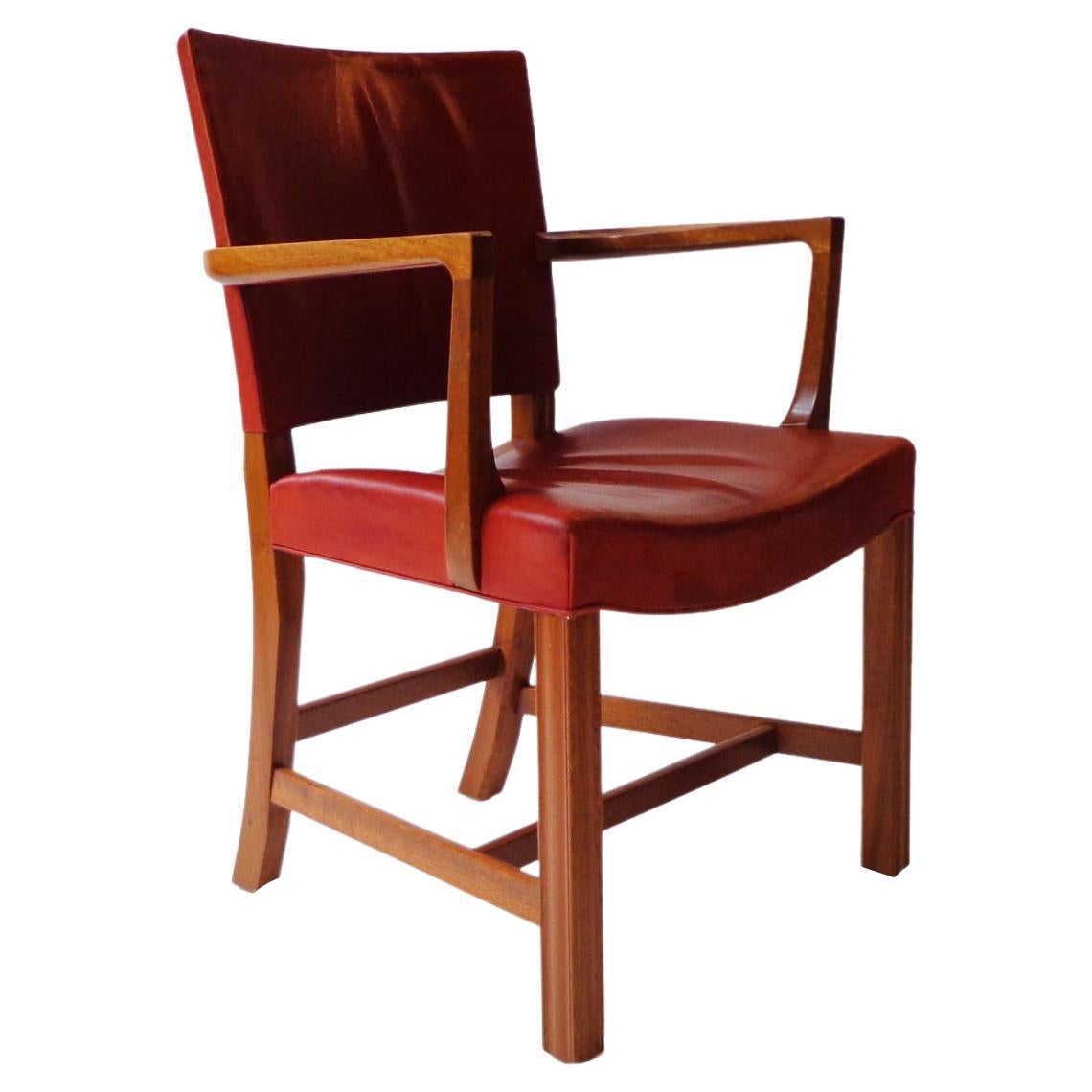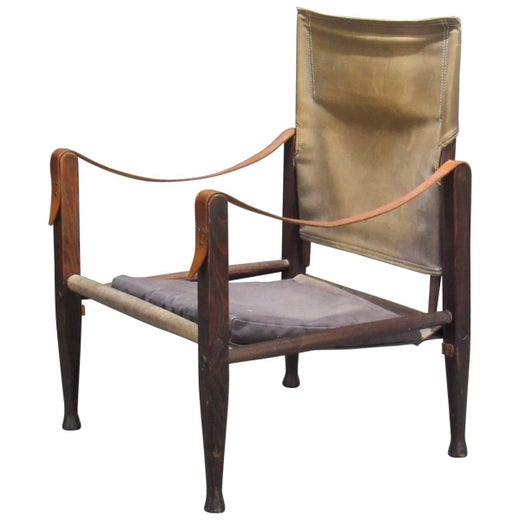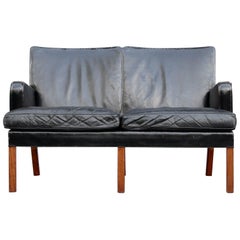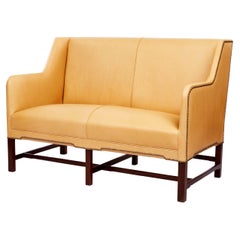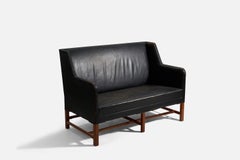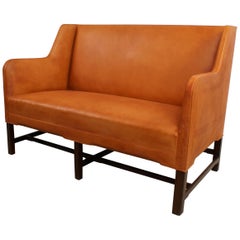
Kaare Klint Settee in Cuban Mahogany and Natural Leather, Model 5011, 1935
View Similar Items
Kaare Klint Settee in Cuban Mahogany and Natural Leather, Model 5011, 1935
About the Item
- Creator:Rud Rasmussen (Cabinetmaker),Kaare Klint (Designer)
- Dimensions:Height: 35.83 in (91 cm)Width: 51.97 in (132 cm)Length: 35.83 in (91 cm)
- Style:Scandinavian Modern (Of the Period)
- Materials and Techniques:
- Place of Origin:
- Period:
- Date of Manufacture:1935
- Condition:Wear consistent with age and use.
- Seller Location:Copenhagen, DK
- Reference Number:1stDibs: LU1081214242802
Kaare Klint
Architect, teacher and furniture designer Kaare Klint is among the most important figures in Scandinavian modernism. Widely recognized as the father of modern Danish furniture, Klint sought to pay homage to historical furniture styles and prized functionality as essential to designing for modern living. He established the design school at Copenhagen’s Royal Danish Academy of Fine Arts, and his students became mid-century legends of cabinetry and furniture-making.
Klint prioritized functionalism and drew on an array of influences in his own work. Furniture experts will observe the influence of 18th-century English seating in his Red chair, while Klint’s iconic Safari chair had roots in campaign furniture. The other exemplary chairs, sofas and tables for which he is known bear the mark of Thomas Chippendale and Biedermeier furniture as well as Greek and Roman forms.
Klint's father was Peder Vilhelm Jensen-Klint, a formidable architect of his day. The younger Klint initially followed in his father’s footsteps, studying under him as well as distinguished architect Carl Petersen. Alongside Danish architect Ivar Bentsen, he headed the renovation of the Designmuseum Denmark in Copenhagen from 1920–26 (Klint also furnished the institution as part of the project). Around the same time, Klint helped found the furniture design school at the Royal Danish Academy. The impact of his role as an instructor there cannot be overstated — he mentored such esteemed cabinetmakers and furniture designers as Børge Mogensen, Hans Wegner and Ole Wanscher.
A prominent advocate of ergonomics, Klint valued comfort and functionality over style. Painstaking research went into each piece of sophisticated yet wholly unadorned furniture he designed, as he endeavored to build structures that took into consideration human proportions and scale. And like the Shakers, Klint believed that quality craftsmanship and good materials were integral to the design of durable furniture that was free of embellishment.
The humble grace of Klint’s style characterizes legendary seating designs that continue to charm today’s legions of mid-century modern enthusiasts. His Safari chair, Faaborg chair, Ravenna armchair and Propeller stool — as well as most of the seating created by Danish modernists generally — have warmed interiors and influenced furniture designers all over the world.
Find vintage Kaare Klint furniture and other Scandinavian modern furniture on 1stDibs.
Rud Rasmussen
Exemplary designs for wood chairs, cabinets, desks and tables are part of the legacy associated with Rud Rasmussen, an iconic Danish furniture manufacturer that collaborated with some of the world’s best known and universally revered Scandinavian modernists.
Rud Rasmussen Snedkerier was established in 1869 in Copenhagen. The workshop’s founder, cabinetmaker Rudolph Rasmussen, was raised in a family of carpenters and had initially specialized in oak furniture. It wasn’t long before the business had grown — in 1876, Rasmussen was operating out of a four-storey factory, and by the end of the 19th century, the manufacturer had forged relationships with esteemed Danish architects including Vilhelm Dahlerup and Thorvald Bindesbøll.
With Rudolph Rasmussen's passing in 1904, the founder’s sons, Rudolph and Victor, took control of the company. They realized their father's dream of expanding the business — the firm had by then been accepting commissions from Copenhagen City Hall and was soon producing furniture for the likes of the police station, the postal service, ministries, technical universities and hospitals. More longstanding collaborations with legendary cabinetmakers and architects came into play, too.
Rud Rasmussen partnered with Mogens Koch, Børge Mogensen, Hans Wegner and Kaare Klint, the founder of the design school at Copenhagen’s Royal Danish Academy of Fine Arts. The manufacturer is known to collectors for producing Koch’s versatile bookcases, and, in 1933, Rud Rasmussen debuted Klint’s Safari chair — a clever and timeless interpretation of campaign furniture.
Carl Hansen and Søn acquired Rud Rasmussen in 2011.
Find vintage Rud Rasmussen seating, case pieces and decorative objects on 1stDibs.
- Kaare Klint Model 5313 Two-Seat Leather Settee by Rud Rasmussen, 1935By Rud Rasmussen, Kaare KlintLocated in London, GBA two-seat model 5313 settee designed by Kaare Klint in 1935 and made by master cabinetmakers Rud Rasmussen in Denmark, between 1935-1945. The economy of line in this design is su...Category
Early 20th Century Danish Scandinavian Modern Settees
MaterialsLeather, Mahogany
- Kaare Klint Leather SetteeBy Kaare KlintLocated in Los Angeles, CAKaare Klint settee designed in 1935 and produced by Rud Rasmussen.Category
Early 20th Century Danish Settees
MaterialsLeather, Mahogany
$7,200 Sale Price40% Off - Kaare Klint, Settee, Black-Dyed Nigerian Leather, Rud Rasmussen, Denmark, 1940sBy Rud Rasmussen, Kaare KlintLocated in High Point, NCAn early all-original settee / two-seat sofa. Designed by Kaare Klint, produced by cabinetmaker Rud Rasmussen, Denmark, c. 1940s. Model 5011, designed in 1935. Legs in mahogany.Category
Vintage 1940s Danish Scandinavian Modern Sofas
MaterialsLeather
- Kaare Klint Sofa Model 6092 with Savak WoolBy Rud Rasmussen, Kaare KlintLocated in London, GBThree-seater sofa with eight tapering mahogany legs. Sides, seat and back upholstered with striped savak wool presumably in the last 10-20 years with natural leather pipings. Model 6...Category
Vintage 1960s Danish Scandinavian Modern Sofas
MaterialsWool
$8,770 Sale Price50% Off - Kaare Klint Sofa Model 5011 in Original Cognac Leather Rud Rasmussen, DenmarkBy Rud Rasmussen, Kaare KlintLocated in WIJCKEL, NLTwo-seater sofa model 5011 in original cognac leather and six-legged mahogany base. Produced by Rud. Rasmussen Cabinetmakers, Denmark. Minor marks on the frame, patina to the leather. Back covered in original canvas. Shown at the Copenhagen Cabinetmakers’ Guild exhibition in 1935. Signed with decal manufacturer’s label to underside: (Rud. Rasmussens Snedkerier). Kaare Klint is widely recognized as the father of Danish modern design. It is hard to overstate his influence. He developed an entirely new analytical approach to furniture design that his students at the Danish Academy of Art would emulate for years to come, yet was also inspired by historic designs from various cultures, modernizing and re-interpreting classic pieces for new generations. Literature: Gorm Harkær, Klintiana: “Kaare Klint”, vol.2, pg 94. Kaare Klint (1888-1954) is regarded as the founding father of Danish Modernim. As an architect, furniture designer and leading professor at the Department of Furniture Design at the Royal Danish Academy of Fine Arts, Copenhagen, Klint established the principles of modern Danish furniture by combining a profound appreciation of traditional construction techniques with a modernist emphasis on function and a rejection of ornaments. Klint’s design was always based on relentless research; he never compromised. Every piece had to fulfill its purpose, be completely clear in its construction with dimensions and proportions corresponding to the human body and display materials and craftsmanship of the highest quality. Logic, often using a mathematical system of measures, and a constructive way of thinking were the foundation of Klint’s philosophy of furniture design. Like many of his contemporaries, counting Le Corbusier and Walter Gropius, he advocated standardization and functional requirements and dismissed the use of all ornamentation. But Klint realized his vision in wood and leather, using traditional craftsmen and working methods and often finding inspiration in historical models. In this way, he charted the course for an alternative Nordic Functionalism that idealized the workshop and the collaboration between furniture architects and cabinetmakers as opposed to the factory. Kaare Klint’s first major work was a collaboration with his mentor, the architect Carl Petersen. In 1914 they were commissioned to design furniture and fixtures for Faaborg Art Museum. One of the highlights to emerge from this commission was the Faaborg chair, a light and elegant chair with clear references to classical furniture. The construction and proportions of an 18th century English Chippendale chair...Category
Vintage 1940s Danish Scandinavian Modern Sofas
MaterialsLeather, Mahogany
- Kaare Klint Model 4118 Two-Seat Box Sofa by Rud RasmussenBy Rud Rasmussen, Kaare KlintLocated in London, GBA two-seat 4118 settee designed by Kaare Klint and made by a master cabinetmakers Rud Rasmussen in Denmark, circa 1940. The exquisitely sharp yet flowing lines of the sofa make the h...Category
Early 20th Century Danish Scandinavian Modern Settees
MaterialsLeather, Linen, Mahogany



